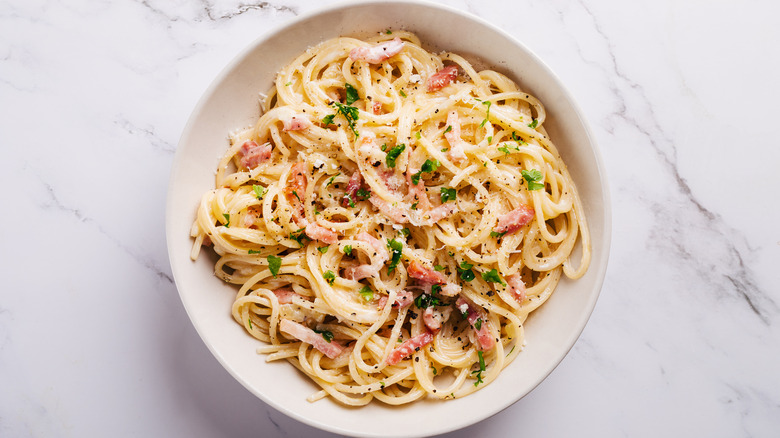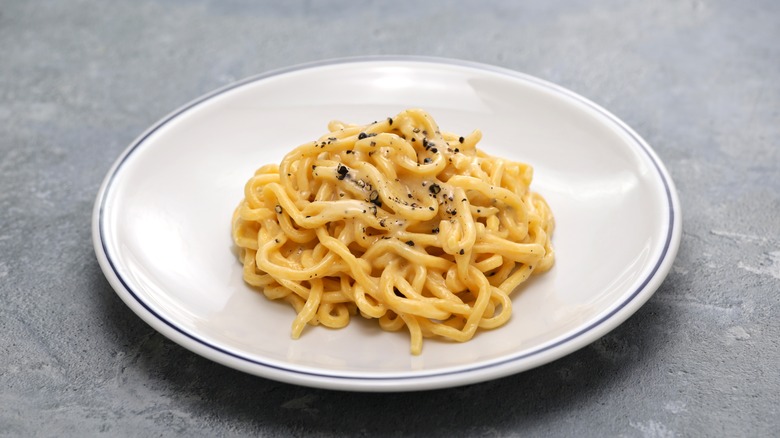Here's Why You Don't Have To Make A Roux For Creamy Pasta Sauces
Learning how to make a roux is an important skill for any budding chef to master, as it's a foundational technique in Western cookery. From a good old Southern gumbo to a classic béchamel for layering into lasagna, this mixture of fat and flour is a versatile base for many dishes. When it comes to pasta sauce, though, sometimes you want that creamy fix without all the effort.
Roux can be fickle, and requires constant stirring to avoid burning it – once it does, there's no going back. Luckily, there are a number of ways to achieve a gloriously creamy pasta sauce without making a roux. By far the simplest is, unsurprisingly, by using cream. From the ultimate late night dish penne alla vodka (infamously termed "disco pasta" as a nod to its origins in nightclubs) to the comforting classic pasta Alfredo, there are no shortage of pasta recipes where cream is the star.
Make sure you use full-fat heavy cream to achieve the perfect thick, rich consistency in your sauce. An easy Alfredo requires little more than cream, butter, cheese and garlic, soothing your soul as much as it fills your belly, with no roux required.
How the Italians achieve a creamy pasta with no roux
Cream isn't the only way to make a rich pasta sauce without a roux. Roman cooks — pasta authorities that they are – rarely put cream and pasta together. Instead, many traditional pastas with a creamy texture are made by emulsifying fatty or starchy ingredients into a silky sauce. An emulsion is essentially a suspension of fat and water; when combined, these usually opposing ingredients can take on a beautifully rich consistency.
Take Roman-style spaghetti alla carbonara, for example. Though you might think that it calls for cream (much to the chagrin of Italians everywhere), carbonara's texture actually comes from the combination of eggs, fat (rendered from guanciale or cured pork jowls), and cheese, mixed vigorously with starchy pasta water. The rapid tossing is what brings everything together, as the agitation helps the liquid and fat to emulsify. The starch in the pasta water, meanwhile, acts as a stabilizer and thickener, helping to achieve that creamy consistency.
Another Roman staple, cacio e pepe, is an even simpler distillation of this technique. The traditional dish requires only pasta water, black pepper and cheese; no roux in sight. It also happened to be Anthony Bourdain's favorite pasta dish – that's one heck of an endorsement. Sometimes, simpler dishes really are the best.


